You’ll discover how to transform your living room into a sophisticated green sanctuary using strategic plant placement and design principles. From creating dramatic plant walls that command attention to incorporating miniature tabletop gardens that spark conversation, these nine decorating techniques help you maximize both style and space. Whether you’re working with a compact urban apartment or a spacious suburban home, each approach can be customized to match your room’s dimensions and natural light conditions.

Contents
- 1 Create a Statement Wall With Vertical Plant Displays
- 2 Layer Plants at Different Heights for Visual Interest
- 3 Style Your Coffee Table With Miniature Gardens
- 4 Transform Empty Corners With Large Statement Plants
- 5 Design a Living Room Window Garden
- 6 Incorporate Hanging Plants for Depth and Drama
- 7 Arrange Plants on Floating Shelves
- 8 Mix Plant Types for a Curated Collection
- 9 Use Plants as Natural Room Dividers
Create a Statement Wall With Vertical Plant Displays
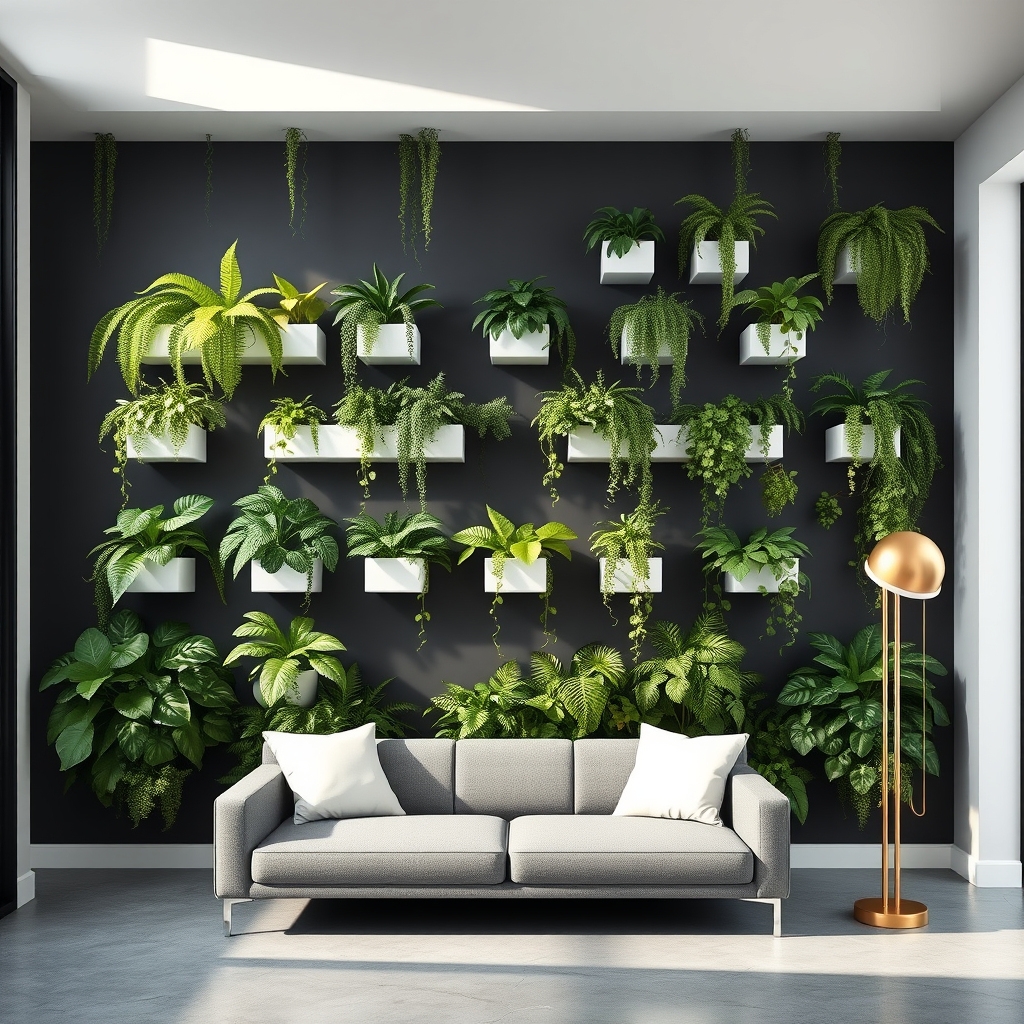
A statement wall with vertical plant displays transforms an ordinary living room wall into a striking living art piece.
Plants are mounted in a vertical arrangement using wall-mounted planters, hanging pockets, or modular green wall systems. The display can range from a simple grid pattern to an elaborate design mixing different plant species, textures, and colors.
The unique feature of this arrangement is its space-efficient nature, allowing homeowners to incorporate substantial greenery without sacrificing floor space.
Plants commonly used include ferns, pothos, air plants, succulents, and philodendrons, creating layers of foliage at different heights and depths.
The living wall becomes a natural focal point, adding dimension and organic elements to the room while improving air quality and acoustics.
Layer Plants at Different Heights for Visual Interest
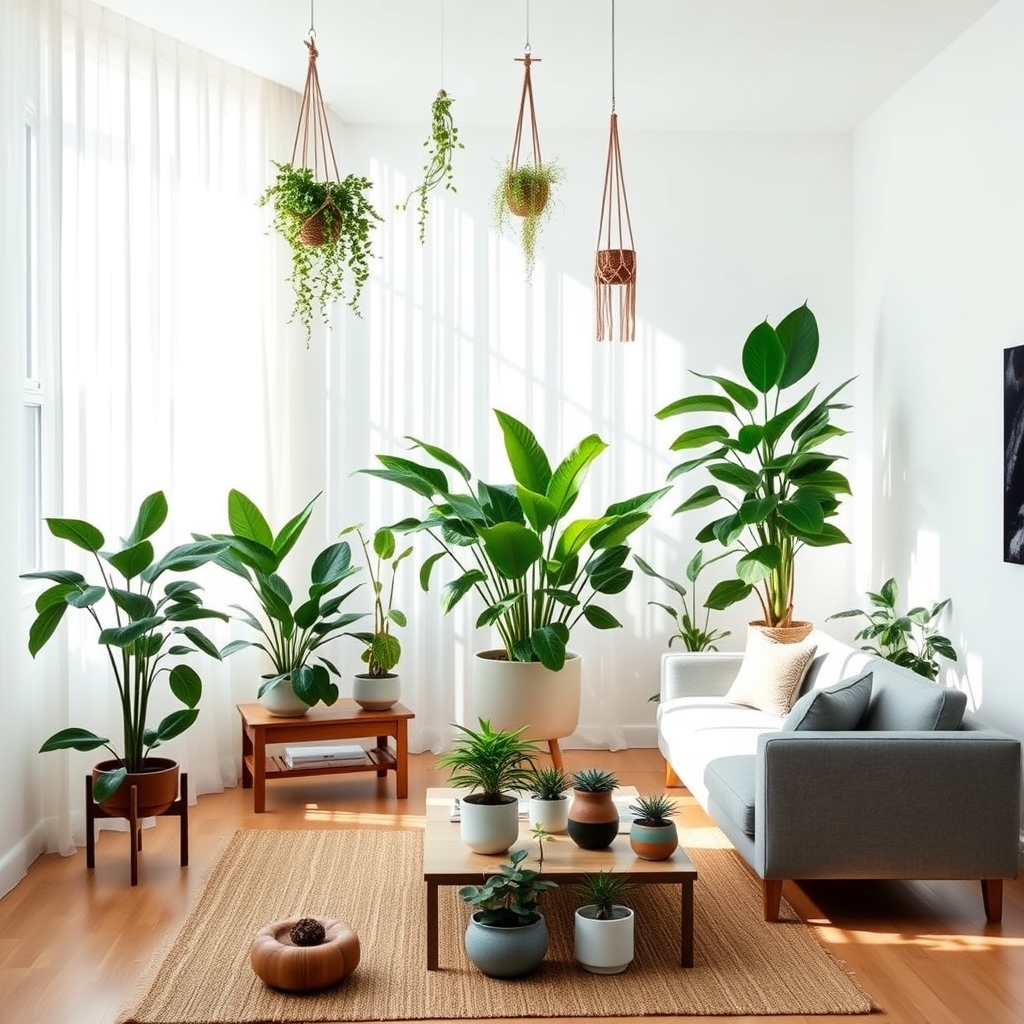
Layering plants at different heights creates a dynamic, multi-dimensional display that draws the eye throughout the living space.
Tall floor plants like fiddle leaf figs or bird of paradise serve as anchor points, while medium-height plants on stands or tables fill the middle ground.
Small potted plants and trailing varieties on shelves or hanging planters complete the upper layers.
This vertical arrangement mimics natural forest canopy levels, adding depth and visual interest to the room.
The varied heights prevent monotony and create natural pathways for the eye to follow, making the space feel more organic and intentionally designed.
Style Your Coffee Table With Miniature Gardens

Miniature gardens on coffee tables create an enchanting focal point while bringing nature indoors. These small-scale landscapes typically feature tiny succulents, moss, or small ferns arranged in shallow decorative containers or terrariums.
The gardens can incorporate miniature accessories like pebble pathways, diminutive benches, or tiny figurines to create whimsical scenes. Different heights and textures of plants add visual interest, while low-growing varieties ensure clear sight lines across the coffee table.
The contained size makes these gardens perfect for small spaces, and their compact nature requires minimal maintenance. Glass-enclosed versions help maintain humidity levels and protect the delicate arrangement from dust.
Transform Empty Corners With Large Statement Plants
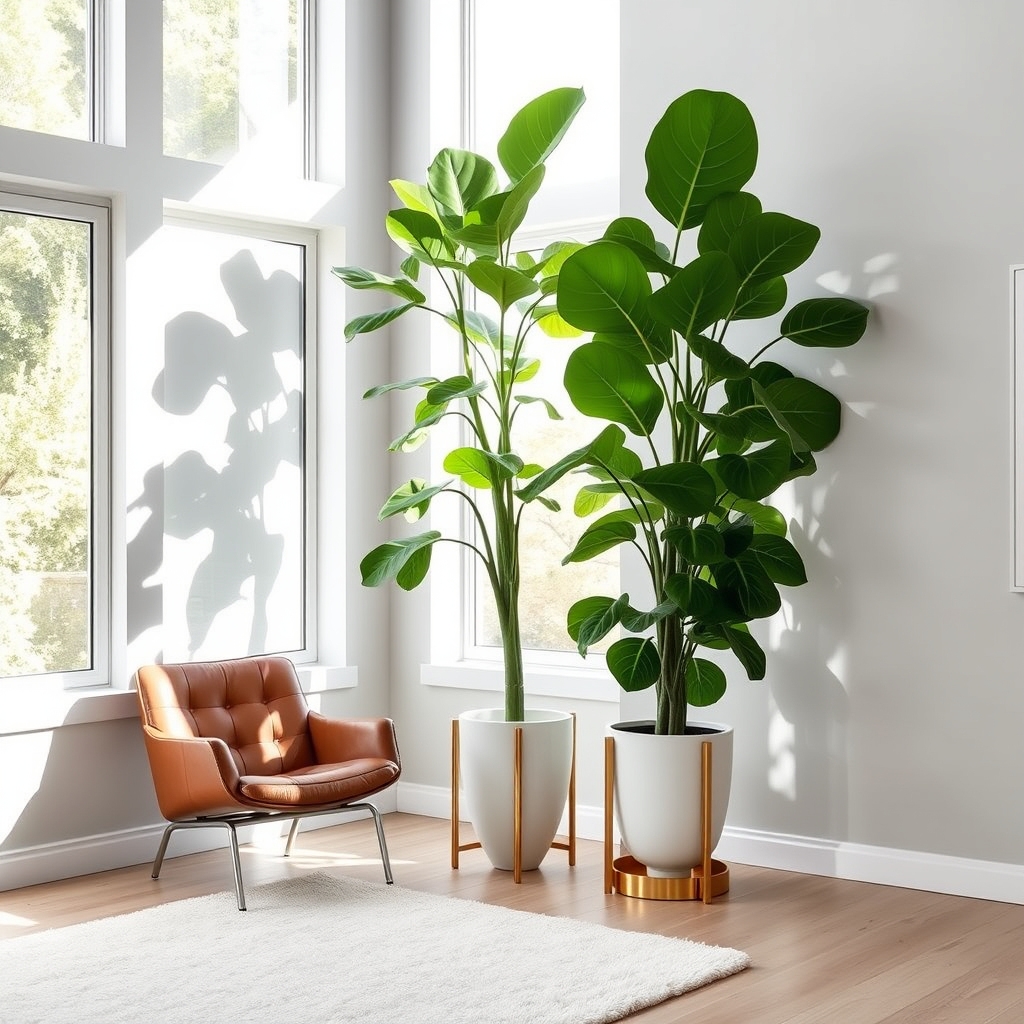
Large statement plants in empty corners create dramatic focal points while maximizing underutilized space.
Tall, architectural plants like Fiddle Leaf Figs, Bird of Paradise, or Monstera Deliciosa instantly fill vertical space with their striking foliage and commanding presence.
These corner installations work particularly well against bare walls or between furniture pieces, adding natural depth and visual interest to the room’s perimeter.
The plants can be elevated using decorative stands or placed in substantial floor planters to enhance their impact.
When properly positioned, these botanical statements draw the eye upward and help balance the room’s proportions while softening harsh angles typical of corner spaces.
Design a Living Room Window Garden
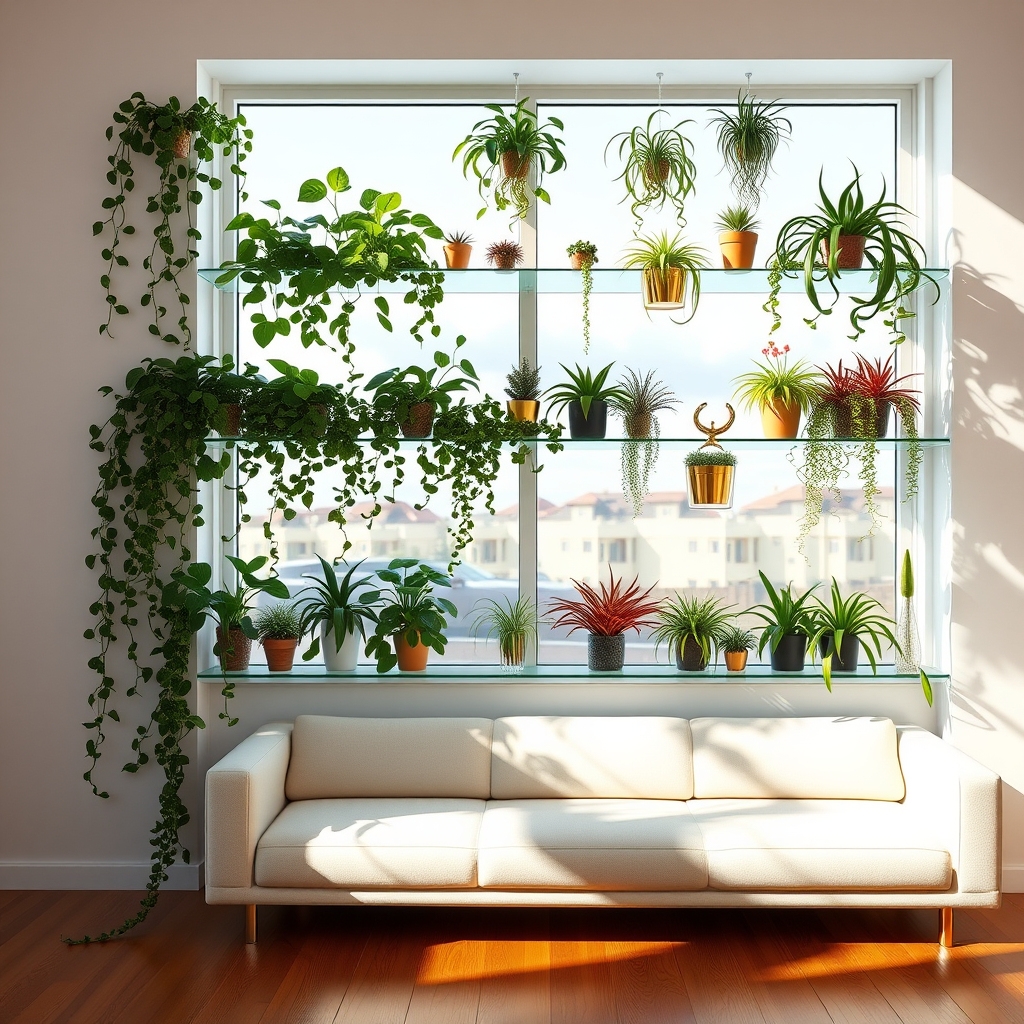
A living room window garden creates a verdant display by arranging plants along windowsills and glass areas to maximize natural light exposure.
The setup typically features a mix of hanging planters, tiered shelving, and window-mounted containers filled with sun-loving houseplants like pothos, spider plants, and succulents.
Clear glass shelves or metal plant stands can be installed at different heights to create visual depth while maintaining an unobstructed view.
Plant selections often include trailing varieties that cascade down window frames and compact specimens that thrive in bright, indirect light.
This garden style effectively brings nature indoors while serving as a living curtain that offers both decoration and privacy.
Strategic placement of different-sized plants creates an organic screen that filters sunlight and adds dynamic greenery to the living space.
Incorporate Hanging Plants for Depth and Drama
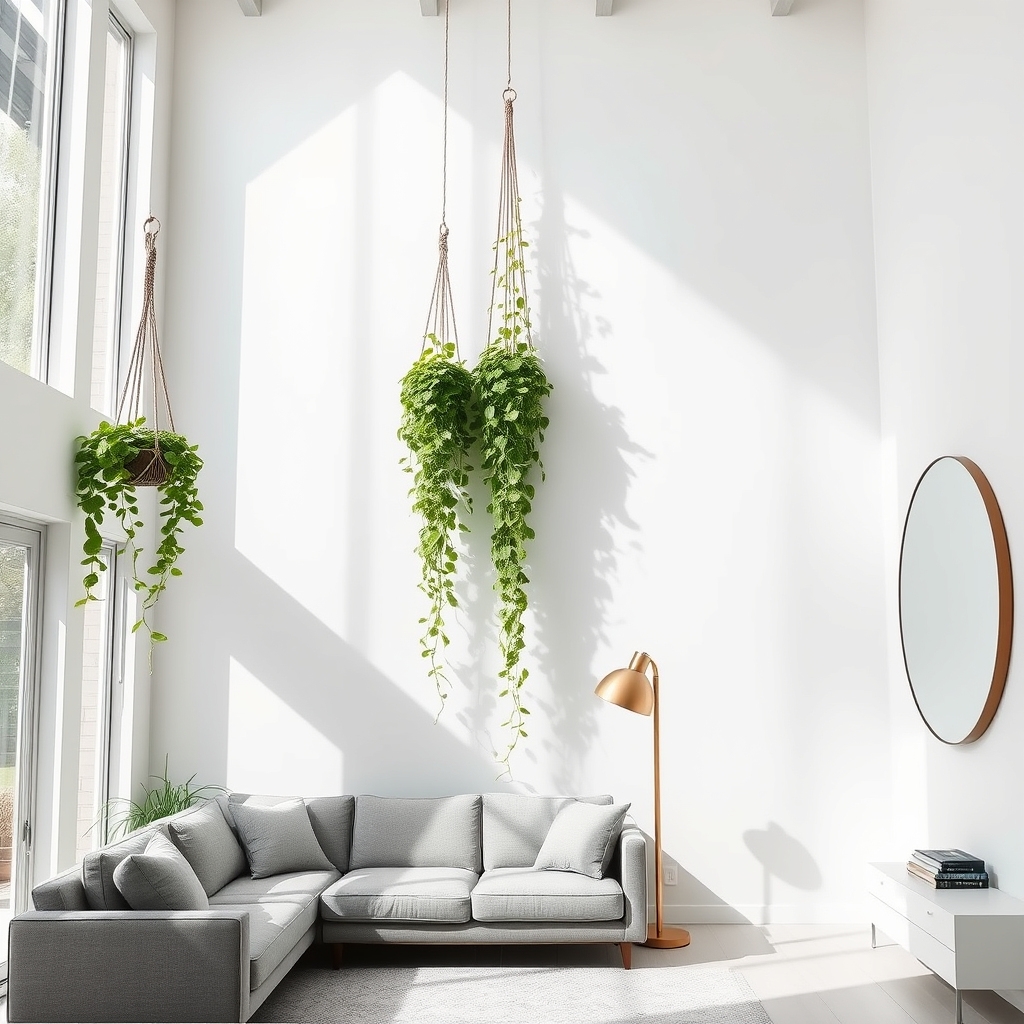
Hanging plants add vertical interest and dynamic layers to living room spaces, transforming ordinary corners into lush, eye-catching focal points.
Suspended from ceiling hooks or wall-mounted brackets, trailing varieties like pothos, spider plants, or string of pearls create graceful cascading effects that draw the eye upward and soften architectural lines.
These elevated greenery displays maximize floor space while adding depth to room corners and window areas.
Macramé plant hangers or sleek modern containers can enhance the decorative impact, while varying heights and positioning create visual rhythm throughout the space.
The floating appearance of hanging plants introduces an element of drama and movement, making them particularly effective above seating areas or in clusters of different lengths.
Arrange Plants on Floating Shelves
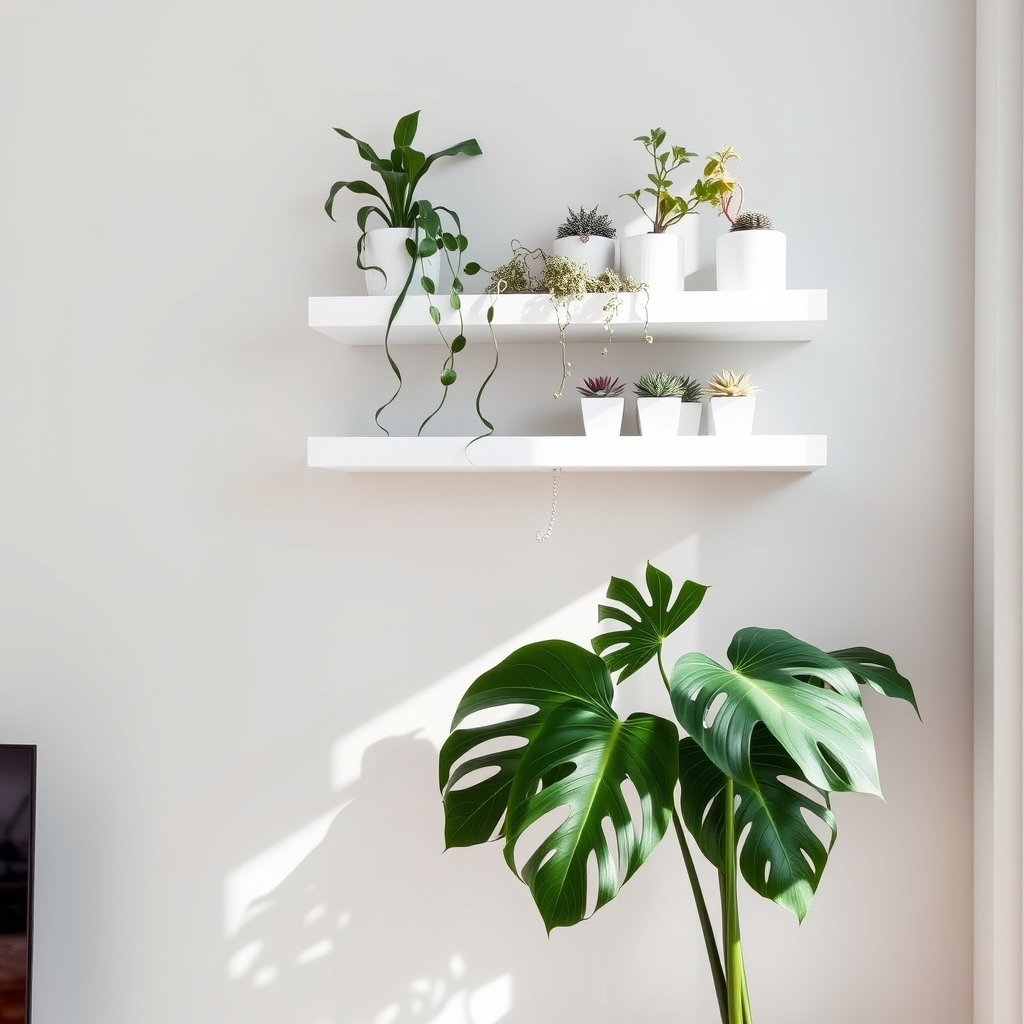
Floating shelves mounted on walls create a striking visual display for houseplants while maximizing vertical space.
These shelves appear to “float” against the wall without visible brackets, offering a clean, modern look. Plants can be arranged in varying heights and sizes, with trailing varieties cascading down and upright plants creating depth.
Strategic placement allows smaller plants to sit at eye level while larger specimens can be positioned higher or lower for visual interest. The arrangement works particularly well in corners or as a living focal point above furniture, transforming empty wall space into a dynamic green gallery.
Mix Plant Types for a Curated Collection
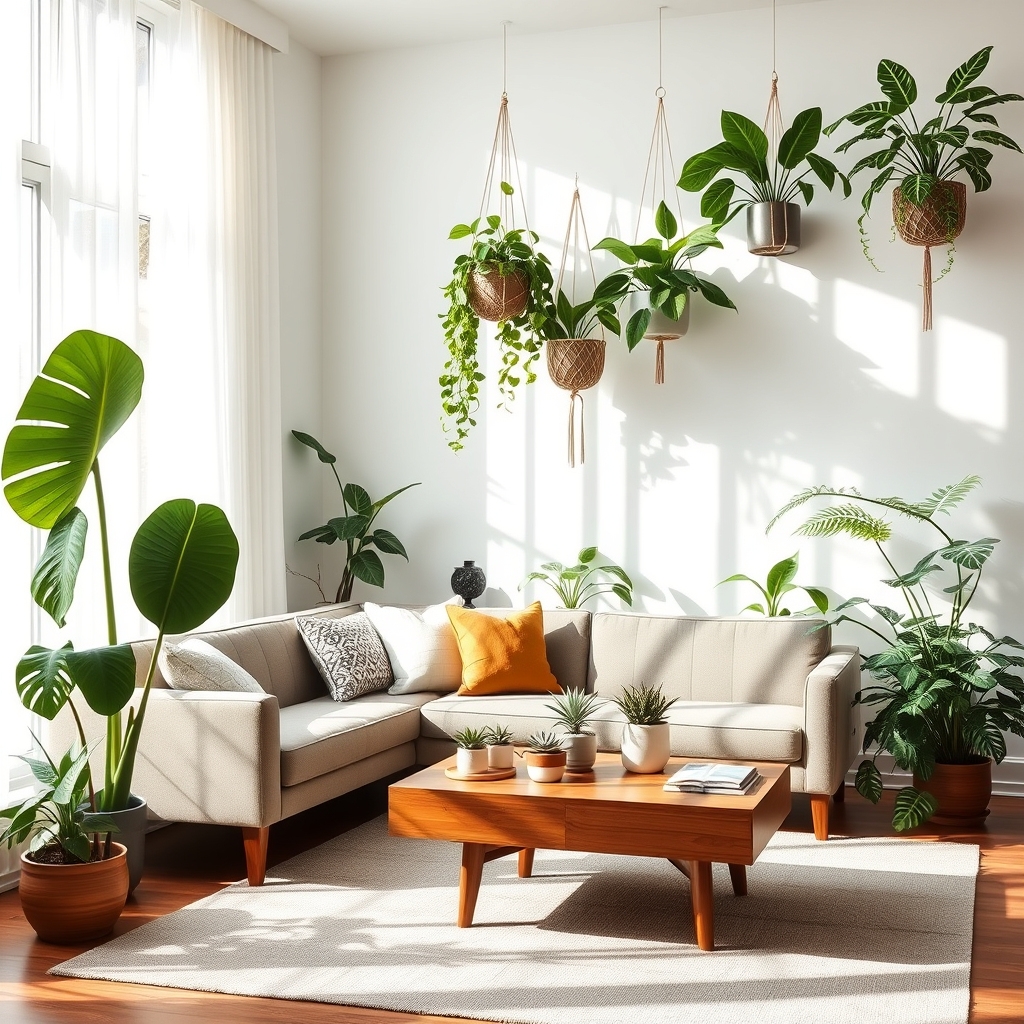
Mixing different plant types creates a dynamic, layered display that adds visual interest and depth to your living room.
The collection should combine varying heights, textures, and leaf shapes – from tall, structural plants like fiddle leaf figs to cascading pothos and compact succulents.
This curated approach allows for contrast between upright, trailing, and bushy growth patterns, while different leaf sizes and colors create natural focal points throughout the space.
Strategic placement of diverse plant species also helps fill multiple vertical levels, from floor to ceiling, creating an organic, garden-like atmosphere within the indoor environment.
Use Plants as Natural Room Dividers

Using plants as natural room dividers creates organic, living boundaries within open spaces while maintaining visual flow.
Tall, leafy plants like bamboo, fiddle leaf figs, or monstera deliciosa can be strategically placed in a row or cluster to separate areas like dining and living spaces.
These green dividers offer flexibility, as they can be easily moved and rearranged, unlike permanent walls.
Plant-based room dividers add vertical interest, filter light, improve air quality, and soften the transition between different functional zones while contributing to a biophilic design aesthetic.
Floor-to-ceiling plant stands or hanging planters can enhance the dividing effect while maximizing vertical space.
